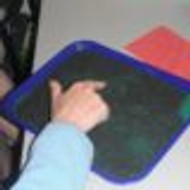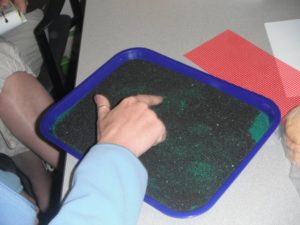Multisensory Education- Hear, See, Move, Learn
Posted by Brainspring on 22nd Sep 2017
Imagine you are traveling in an unfamiliar city and are looking to visit an art gallery.
Your cellular data is off and you’re relying on getting directions the old-fashioned way. You walk out of your hotel and ask a local you meet on the street. He says “You will walk three blocks straight, make a left at the bank, and walk straight until you see the park. Take the street on the left corner of the park where the pond is. The art gallery will be on your right in a couple of blocks.”
As he speaks, you are processing many things at once: the directions, turns, number of blocks and landmarks. You are illustrating a mental image of the path but naturally, without having been there before, it’s hazy. To be sure, you stop someone again to ask if you’re heading in the right direction. This person happens to have a notebook handy. He pulls it out and makes a sketch of the area and clearly marks your destination. You now have a solid visual reference of where the art gallery is.

Following the directions of these two people you make it successfully. Now imagine the next day you decide to revisit the gallery, or go back to that great lunch spot next door. You’ll likely be able to do so with no further guidance or reference to the sketch! During your walk, you had made notice of, and integrated your own impressive landmarks- a church, that lady on the street selling gorgeous sunflowers, or the sidewalk that turns into cobble stone on a particular street. These become reminders that you’re on the right path. Your body walking down the road, stopping at the stop lights, and integrating the many visual cues along the way are all the kinesthetic aspects to your memory formation. You’ve successfully made it to the same place the next day with little effort due to all the reminders guiding the way. The verbal directions of the first person, the drawing of the second, and finally your own walking to the destination (the “hands-on” experience) are all sensory input you integrated in creating this memory. This multisensory experience has allowed for a quick and strong memory recall to guide you back to the same place.
We constantly rely on multisensory input while learning new skills including a new language, a sport, dance, knitting, or in any other hobby. The process of learning involves listening to directions, visualizing, seeing the activity being modeled and finally doing it yourself. The goal of multisensory instruction is to exploit the use of all the senses to create a strong memory of the activity at hand. According to Falzona, in the 1930’s Orton-Gillingham proposed the use of all sensory methods and modalities to improve ‘weak memory patterns’ in teaching reading. They understood the importance of multisensory techniques, the concept of metacognition in learning and the importance of using these techniques when other processes where challenging to the reading situation.
The multisensory approach is particularly significant in methodologies developed for children with dyslexia, however it is just as beneficial as part of the standard classroom reading curriculum. Falzona states, “There has been substantial evidence that, with regard to teaching lower level skills of reading, the use of structured multisensory techniques for teaching literacy are one of the best ways to introduce and develop literacy in the classroom.” Traub and Bloom claim that teachers using structured multisensory reading programs find the techniques effective not only with students with Specific Learning Disabilities but with all children, resulting in children learning to spell and read more easily at an earlier age.
With as many as one in five students having dyslexia, using a structured, multisensory reading program in the classroom setting can help solve the problem of the students who fall through the cracks. Falzona references a study of dyslexic students with whom following a structured multisensory program in literacy started to outperform children without dyslexia. “Such results are possible because a structured multisensory program includes the use of phonics, decoding, sight word reading, rule-learning, metacognitive approaches, blending together within a whole language approach.” It is therefore clear that structured, multisensory approaches are conducive to successful reading for all. Learning should be enjoyable, creative, and inclusive in nature. It should involve colors, images, drawing, moving, and even singing! It should embrace the needs and challenges of all students and be inherently beneficial for the classroom as a whole.
Georgia Diamantopoulos
Georgia is a tutor at Brainspring Learning Center in Shelby Township.
References:
Structured Multisensory Techniques in Reading and Learning Patterns- Some Considerations
Ruth Falzona , Colin Callejab and Carmen Muscatc
- Revista de Ciències de l’Educació Desembre 2011. Pag. 51-71 ISSN 1135-1438 http://pedagogia.fcep.urv.cat/revistaut

